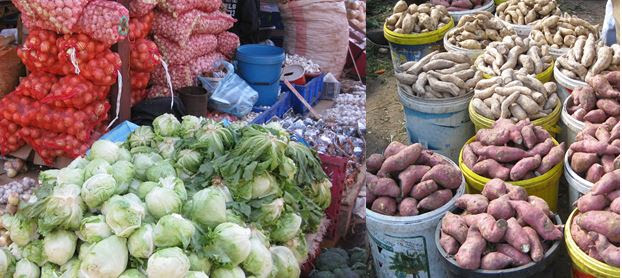By Charles Dhewa
The fundamental role of agriculture and SMEs in many developing countries should by now have seen local economists inventing better ways of capturing and expressing economic conditions and inflation. It is clear that imported concepts like Consumer Price Index and Producer Price Index developed in the North cannot adequately represent economic dynamics in agriculture-driven low income countries.
For instance, it is no longer debatable that African agriculture requires a dynamic pricing index which takes into account different production zones, seasonality, diverse transportation methods and many other factors. Farmers in different production zones cannot have the same prices for maize and other commodities. For example, farmers producing soya bean and maize in sandy soils use more inputs like fertilizer than those in heavy clay soils. It means these farmers have different costs of production. On the flip side, farmers in sandy soils may use less diesel than those in heavier soils. Distances to market should also be factored in so that farmers in particular areas can know the type and size of transport they can hire cost-effectively. Such information is also critical for transporters, processors and financiers.
Market dynamics
Like most industries, every informal mass market in developing countries has an invisible cartel of price experts who set prices of commodities based on historical trends (not codified) and commodity supplies into the market which give signals of the volumes in farming areas. However, cartels in mass markets do not often know or care about the cost of production enough to consider such costs in setting prices.
Circumstances under which farmers need real-time pricing intelligence vary and include cases where a buyer suddenly shows up on-farm ready to buy the commodity. In such cases the farmer wants to verify some prices with eMKambo and other institutions in big urban markets like Mbare in Harare before making a decision to accept a price being offered by the buyer. In some cases, a farmer may have quietly brought his/her commodities to the city using public transport or his/her own transport and now has to verify market pricesbefore taking the commodity to the market or entertaining buyers. All these circumstances need accurate real-time information. Historical information is not helpful. That is why eMKambo has advanced in setting up a dynamic pricing index taking into account production costs and market dynamics.
Beneficiaries from a dynamic price index
Besides traders, beneficiaries of price information include consumers and vendors who need to leave their homes with enough money. If customers and vendors understand the price, they are able to budget correctly and buy more to the benefit of traders. Commodities also move fast in the market when customers and buyers come prepared. Negotiation time in the market is reduced as the marketing process becomes very fast. Traders from other markets who often come to buy from markets in capital cities become aware of how much money to bring for hoarding commodities as well as the size of transport to be used. If a buyer from Masvingo hears that the price of cabbage has gone down from $3 to $2/head he will adjust his budget to accommodate other commodities needed by customers.
Ultimately, transparent price information benefits every value chain actor. Farmers deserve to know how much the trader is going to make on their sweat and how much is taken by other costs like transport, loading, packaging and others. Price transparency through a price index reduces abnormal profiteering by traders at the expense of the farmer. If vendors get tomatoes from Mbare at $17/crate, how much do they charge their consumers in high density areas?
Why this is important
In spite of accounting for more than 70% of the food, economists in developing countries have totally ignored inflation in the mass market, preferring to focus on inflation in relation to basic commodity food basket. Yet it is important to figure out the percentage increase in the price of inputs and transport to the market so that farmers can know if market prices have changes in correspondence to input costs. Many farmers incur losses because this issue has not been clearly articulated. Using figures, farmers can see how lack of resonance between input costs and market prices is leading them to incur 30% losses.
It is critical to track inflation around the agricultural commodity basket different from the CPI for basic staples like cooking oil and sugar. Formal companies are recording and doing their costing and are using such details to collude in fixing prices of basic commodities. But there is no such thing for farmers who should be assisted in mastering market-related budgeting. Farmers are mostly affected by external factors beyond their control and these include cost of inputs, labor, fuel, water, equipment and many others.
Beyond improving quality and economies of scale as well as benefitting from shortages in the market, farmers do not have control over most external factors. In the market, farmers are given a price even if their costs of production and transporting have gone up by 20%. They are pushed within a certain price range. The price index will give farmers bargaining power and can be able to see that is the production price is going up by 5%, prices offered by the market should be adjusted upwards weekly. Farmers can also know how increases in the price of petrol contributes to increases in commodity prices in the market.
A system should be put in place to reveal some of these issues and impact on the market or consumers. Inflation around food markets is very important because it assist farmers to plan and make projections. A farmer who harvests crops when inflation is going up by 20% and earns $100, the following month the farmer will earn less than $90. To remain with $100 the farmer has to charge $110. If the farmer sees the price of inputs going up by 5% monthly and expect to buy inputs in three months, the inflation will be 15% and the farmer will not be able to afford inputs.
How consumers are affected by absence of a Price Index
Prices in the mass market are rarely not cost-driven or cost-based but depend on arbitrary decisions. People just decide how to sell without a clear basis in ways that anchor future increase or decrease of prices based on supply. For instance, the cost of producing a cabbage head is 60c – 70c of which the bigger component (15c-20c) is the cost of seedlings. A farmer who decides to price at $1.50 – $2/head on-farm is doing so on what basis? How did s/he arrive at the price? Why should a producer increase prices by a 200% mark up? What is the standard used for setting mark-ups in the agricultural industry? When a trader gets cabbages @ $2 and sells @ $3 – $3.50, this drives inflation. Everyone makes a decision on the highest prices. The farmer is not making decisions on costs and the trader is also marking up arbitrarily. They are all guessing and that means the consumer is not charged fairly. Such decision-making is an inflation driver in the whole country.
Supply and demand is over-shadowing costing principles as determinants of arriving at costs. How can we use costing as the main determinant? Disorganized supply and demand causes all these challenges. Traders and farmers should know the base price irrespective of supply. That is why for tomatoes it is important to play with the number of fruits and not sell using kilograms. All parties should control the extent to which prices can fall before everybody begins to incur losses. This important process and analysis should be conducted at food systems level as opposed to isolated individual farmer level. Banks and other financial institutions can use the price index to track and manage Non-Performing Loans.






